
16 minute read
Ancient Civilizations
c. 3100 BC- c. 476 CE
Ancient civilisations are the prominent ages were figures and silhouettes started to become rationalized and taken accustom to being a part of the ‘history of dress’. Civilisations were group of people who worked together to build a society dating back to 6000 years ago (Summerly, 2012; Gibbs, 2012). People in a civilisation work together to provide a sufficient life to everyone; this is done by sharing their technology, wealth, and forms of trade (Summerly, 2012). Although they created many architectural achievements like temples, pyramids, theatres, and other structural establishments, people that were associated in the ancient civilisations followed seven main themes, which include (Gibbs, 2012):
Advertisement
I. A large population
II. Agricultural food production
III. Government
IV. Religion
V. Crafting techniques
VI. Trading from foreign countries VII. Writing techniques
Figure 1: Map of Ancient Civilisations (Agatucci, 2011)
Ancient Mesopotamia
c. 8000 BC- c. 2000 BC
Ancient Mesopotamia is part of the ancient middle east and described as the oldest civilisations in Asia (ACW, 2017). This civilisation followed a social order, shown in figure two, consisting of slaves as being the lower class, commoners, merchants, artisans, and scribes as being part of the middle class and the priests and king which were a part of the upper class. These people consisted of Sumerians, Akkadians, Babylonians, Assyrians, and the Persians in which they helped to shape this region.

Figure 2: Social classes of Ancient Mesopotamia (Webb, 2018)
Clothing & Textiles
Many inventions of clothing were created and invented from this period. A piece of clothing that adorned the female and the male represented the significance and separation of both genders. According to archaeologists (Bertman, 2003, p.289), textiles where a source of materialism that was firstly invented. Textiles came from plant or animal fibres in which were eventually twisted, sewn, and plaited. Types of materials consisted of sheepskin, or wool which was Mesopotamia’s common kind of cloth material (Bertman, 2003, p.289).
The common cycle for clothing would be that farmers would crop seeds for flax and cotton to grow and domesticate their sheep and goats. Yarn, thread, wool, linen, and hair would be the main sources used for their clothing. Higher class and middle-class people wore wool and linen as those materials were considered highly priced. Assyrians were the empire who brought cotton in which had been imported from Egypt (Bertman, 2003, p.289). A prime source of wealth was in fact textile production. The production of textiles would be all produced in what was called a ‘cottage industry’, (Bertman, 2003, p.289). This form of establishment would have looms and spindles where most female commoners would spin and weave the textiles for people in higher classes. The types of looms that were used are called the ‘ground loom’, shown in figure three, in which the threads were spread between two beams and fastened horizontally to the ground, and the ‘vertical two-beam loom’, shown in figure four, where the threads are spread out placed vertically facing upwards (Lassen, 2012).

Figure 3: Illustration of a ground loom (Carta,n.d.)
Figure 4: Illustration of a two-beam loom (Roth,1913,p.3)
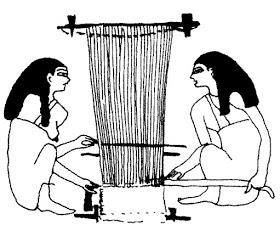
This figure shows a sculpture of a man wearing a type of skirt by the term ‘kaunakes’. This kind of skirt is the earliest kind of wear that Sumerian men wore from the near East. These were made from hanks of sheep or goal wool which were stitched or knotted together into horizontal bands (Hill, 2011). Women were also known for wearing this kind of adornment.

Figure 5: Statue of Eannatum, Prince of Lagash, 2600-2340 BC (Musee de Louvre, n.d.)
Figure six and seven represent statues that show two standing male and female worshippers. The female worshipper represents the Sumerian goddess of abundance which was discovered on the site of Nippur. The garment that is wrapped around the woman’s left shoulder is fallen into folds which is indicated by the lines engraved on the sculpture also showing that the type of fabric was smooth. The hairstyle is placed in two plain bands and styled in curled locks that are hung on both side of the face. This early Sumerian dress worn by men is the same material made from kanuakes cloth. According to Totora (n.d.), wool and sheepskin materials were used for these types of garments which were attached with the fleece. In addition to this, the longer the type of skirt was, the wealthier the wearer is.

Figure 6: Statue of a female worshipper, 2600-2500BC (The Metropolitan Museum of Art, n.d.)
Figure 7: Statue of a male worshipper, 2900-2600BC (The Metropolitan Museum of Art, n.d.)

These headpieces were worn by female royals or high priestesses (National Clothing, 2018). An element used in ancient Mesopotamia was the gold jewellery and the petals that were significantly common. Figure eight shows a headdress that is adorned around the forehead which has gold leaves which are separated by lapis lazuli and carnelian beads. Golden hair ribbons and silver hair rings completed the headdress (MET Museum, n.d.). Figure nine shows a headdress that was found from the “Royal Tomb of Queen Puabi”, showing ornate delicacy and contains 40 feet of a coiled gold ribbon that is wrapped around the hair buns, finished with lapis lazuli beads and hammered gold wreaths (Rothstein, 2015).

Figure 9: Headdress, 2600-2450 BC (Rothstein, 2015) Figure 8: Headdress, 2600-2500BC (The Metropolitan Museum of Art, n.d.)

Ancient Egypt
c. 3100 BC- c. 332 BC
Ancient Egyptians adopted from ancient Mesopotamian clothing and accessories throughout the continuous years. Their social class structure consisted of similar figures yet different conquerors consisting of the Pharaoh as shown in figure ten.

brea
Figure 10: Ancient Egypt Social Structure (Costa, 2017)
The Egyptian dress, containing seven-thousand beads, was a highly prolific symbol that identified the status of the wearer. The beaded fishnet dress findings were found in the burial of the reign and the dynasty of King Khufu. Known as the ‘Tarkhan Dress’ and is a reconstructed garment from the following excavation by Harvard Museum of Fine Arts Expedition in 1927. It was reconstructed using the same body shape and size of the mummy found, giving an accurate pattern of the garment. This dress shows a ‘lozenge’ pattern which is believed to be worked on linen or a separate net over the linen. Some beads were still found originally on the garment which were studied to be in the same hue from lapis lazuli and turquoise colours (Museum of Fin Arts - Boston, n.d.).
Figure 10: Ancient Egypt Social Structure (Boston: Museum of Fine Arts,n.d.)

Loincloths and kilts were the most popular garment worn by lower class working men which were adorned with a tied sash. These garments were made from linen, and came in a white colour, which were folded and draped around the body. High-class men would accompany richer loincloths or kilts with knee-length shirts and other jewellery adornments. Both men and women wore the same type of sandals made from vegetable fibre called ‘papyrus’. It was also highly common for high class and especially low-class people to be barefoot (Canadian Museum of History, n.d.).

Figure 11: Ancient Egypt Low-Class Working Men wearing loincloths or kilts (Egyptraveluxe, 2012)
Figure 12: Ancient Egyptian sandals (Russell, n.d.)

Materials used for Egyptian jewellery consisted of copper worn by middle class in which they could afford and gold which high-class people wore. Egyptian jewellery is finished with prestigious stones and various gems. Other materials consisted of lapis lazuli, obsidian, garnet, rock crystal, carnelian, pearls, and emeralds (Gem Rock Auctions, n.d.). Wide collar necklaces are the most popular type of jewellery that were worn by highclass women. Beaded rows of flowers or animals constructed the structure of the necklace. Amulets were often hung as pendants to symbolize protection for the wearer. Men and women wore necklace and rings during this era (Gem Rock Auctions, n.d.).

Figure 13: Broad Collar of Nefur Amulets 1504-1450 BCE (Metropolitan Museum of Art, n.d.)
Figures fourteen and fifteen indicate a massive resemblance of the ‘wide collar necklaces’ shown at the Chanel Pre-Fall 2019 collection. Karl Lagerfeld discussed his interest for the Ancient Egyptian civilisation and honours a show dedicated to his admiration of the ancient culture.
Although, Lagerfeld’s designs for garment work showed more contemporarily inspired styles, one of his feminine creations for this collection included is shown in figure sixteen which shows a long dress similar to the garment described in figure ten. Beading is constructed throughout both garments with the same style of the neckline. However, Chanel’s garment has more white fabric included which could be inspired from their white linen dresses.
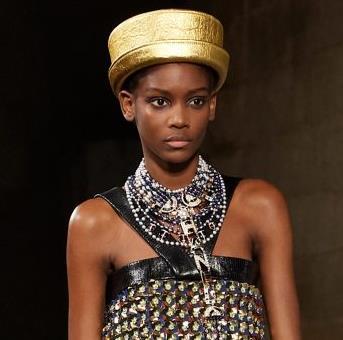


Figure 14, 15 & 16: Chanel PreFall 2019 Collection (Vogue, n.d.)
Ancient Greece
c. 800 BC- c. 146 BC
In ancient Greece, the kingdom was led by male governors along with male citizens that fall underneath. Politicians and soldiers were also apart from the upper class. Following this, women and children were part of the middle class followed by the slaves which were the lowest class.
Terms for Greek clothing can be misinterpreted as Greeks themselves used them carelessly. However, every clothing piece that Greeks wore consisted of a rectangular piece of white cloth. Greeks draped this piece of cloth in different ways making it seem like it is a completely different garment and changing their silhouette (Bleiberg, 2005, p.84).
Colours & Dyes
Many clothing derived from certain colourful textiles and dyes that were staple pieces from this era. Dyes were typically used to colour their clothes in which they derived from vegetables. The most popular and precious dye was the colour ‘purple’ which came from a tropical sea snail, a ‘murex’. This colour was prized in the land of Phoenicia, which came from the colour purple in Greek, ‘phoinix’. This coloured dye was imported from Canaanite port towns. It was invented in ancient Mesopotamia, yet it became popular in ancient Greece (Bertman, 2003, p.288). Figure seventeen shows three different shades of purple, including a Tyrian purple colour that derived from shellfish shown alongside of each other.
Figure 17: Ancient Greek purple colours derived from snails (Museum of Natural History Vienna,n.d.)
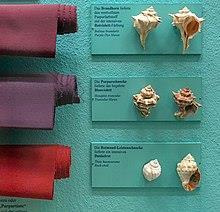
Other colours Greek citizens wore during the time, consisted of other bright hued saturations like green, indigo, yellow, violet, dark red, and dark purple (Nova Roma, n.d.). A colour palette shown below is a clear description of how their colours were worn paired together or separately. Figure eighteen shows a representation of how these colours were worn depicted by a drawing.
Figure 18: Ancient Greek HighClass Costumes (Seabrook, 2016)

Clothing
The Chiton dress was one of the garments that men and women draped over their body and embraced (Bleiberg, 2005, p.80). It became popular in Athens, and could be described as a simple garment, mainly known as a tunic. The tunic consisted of a rectangular piece of cloth, fasted with pins at the shoulders for gathering at the sleeves and tied at the waist with a girldle, also known as a lightweight belt which helped to keep the chiton in place and for the garment to fall easily. Figure eighteen show a step-to-step representation of how a chiton was worn.
Figure 18: Ancient Greek garment wear (Lahanas,n.d.)

Other Greek garments consist of the Peplus, Himation, and the Strophion that both women and men wore in the different drapings.as shown in figure nineteen. Embroidery was also stitched along the edges of the garments which consisted of silk fibres (TRC Leiden, n.d.) done by looms or hand stitched on to the fabric.
Figure 19: Ancient Greek High-Class Costumes (Textile Value Chain, 2020)

Hairstyles in Greece was at the same proximity where it started to change. Men’s hair was short, and beards were grown whilst high class’ women’s hair was typically long and female slaves had short hair. Curly and braided hair was how women styled it. Blonde hair also highly prized, if women did not have blond hair, a hairnet made from gold thread was worn on top of their head to make it appear blonde (Home Science, n.d.). The example in figure twenty shows a headdress explained previously that was worn over the hair tied in a bun. It has five elements which contains the medallion, chains, tassels, net, and the circular base. The medallion symbolizes the goddess of love, which is the Aphrodite, the tassels are beads consisted of long chains that hang from the medallion, the net is made out of bags of small gold chains, and the circular base is embellished with materials like a large Herakles knot, floral tendrils, ivy leaves, and berries (Reznick, n.d.)
Makeup on the other hand, was applied on their eyes with the use of a Kohl product, red ochre product was applied on the lips, and black powder was applied to their eyebrows. Women used to keep their skin pale by using honey and olive oil as it was considered a status symbol (Home Science, n.d.).
Figure 20: Ancient Greek headpiece (Reznick, n.d.)

Figure 21,22 & 23: Ancient Greek makeup products (The Ancient World, 2011; In love with Med, n.d.;Bios, n.d.)



Greek designer, Mary Katrantzou, captured a modern and introspective twist on her Greek origins on to her SS17 collection. This collection included colour palettes that ancient Greeks wore, designs featured on their embroidery and highly inspired by the Minoans. This was distributed in a modern approach showcasing these modern prints on to ready-to-wear garments (Mary Katrantzou, 2016).

Figure 24: A look from Mary Katrantzou’s SS17 collection (Mary Katrantzou, 2016)
The silhouette was inspired by their dress and their inanimate objects such as their vases. Elevating inspiration from their patterns and streamlined surfaces. Long rows of chains, shown from their jewellery pieces, were mounted with lace, and overprinted giving a creative insight into the designer’s heritage and inventive explorations (Mary Katrantzou, 2016).

Figure 25: A look from Mary Katrantzou’s SS17 collection (Mary Katrantzou, 2016)
Ancient Rome
c. 753 BC- c. 476 CE
Ancient Rome was founded by an ethnic group in a small farming village along the Tiber River. Other civilisations surrounded amongst the Italian peninsula, in which republic Rome conquered the rest of France, Spain, Turkey, North Africa, and Greece. Rome became highly influenced by the Greeks and encompassed certain tactics that they had including (Easley, 2020): • Architecture, • Literature, • Sculpture, • Art Paintings, • Mosaics. • Pottery, • and Glass (The British Museum, 2013).
The Roman world went through a change as the empire ushered in economic and social revolution. There were multiple advancements including the service to higher class members (The British Museum, 2013).
Figure 26: Map of the Roman Empire during the reign of the Empire Trajan (The British Museum, 2013)

Fabrics
Wool is a fabric that were commonly used in Ancient Rome. Wool came from sheep and it was an easy material to dye. It was used for winter garments to keep the wearers warm. Silk was a fabric that was not widely common because of its price so people who could afford it were wealthy people. For this reason, silk was a symbol of power.
Men’s Clothing
• The ‘toga’ is the most worn garments by men. • Worn with a short tunic underneath. • Loincloths were worn as un undergarment. • It was wrapped around the man’s shoulder. • Made from simple cloth. • Different colours resembled different reasons to be worn at certain events. • Used for daily activities. • Bleached toga = represents a man of high political power. • Darker dyed toga = worn at funerals (Pendergast & Pendergast, 2004).

Figure 27: Men wearing the ‘toga’ (Classical History Rocks, n.d.)
• The ‘stola’ was worn by matrons. • Two undergarment tunics were worn underneath the garment. • Loincloths and bra/corsets were worn as an undergarment. • Consists of a long white dress which gathered around the waist area. • Fastened by shoulder clasps. • Women with questionable morals, had to wear tunics. • Noble women had jewels such as emeralds, aquamarine, opal, and pearls attached with their clothing (Crystal
Links, n.d.; Perdergast & Pendergast, 2004).
Figure 29: Snake ring – AD 1st Century (MET Museum, n.d.)

Figure 30: Snake ring by Gucci (London Jewelers, n.d.)
Figure 28: Illustration of a women’s stola
(Duiruy, 1883)
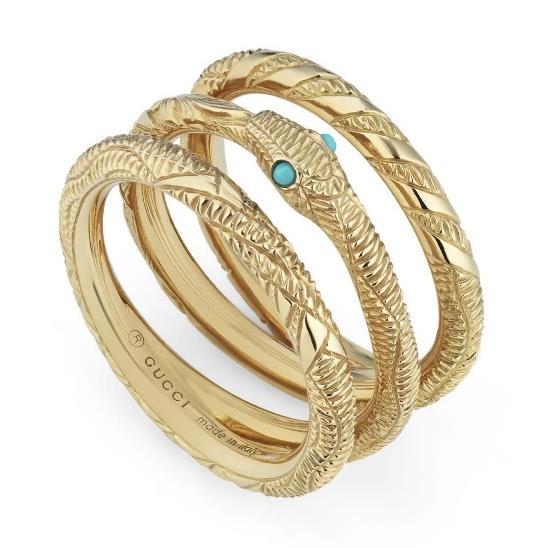
Current Inspirations
Snake rings were prominent factors in Ancient Egypt; however, it was not their traditional jewelry. It was considered as a healing association (MET Museum, n.d.). Gucci replicated a similar gold ring that has bands which are formed into stacking rings that represents a snake. Adding a modern element to the design, it has turquoise gemstones on each eye which is one of the commonly used coloured gemstone that ancient civilisations had used in their accessories, jewellery, and sculptures (London Jewelers, n.d.).
Figure 32: Roman boots (Humphreys, 2020)

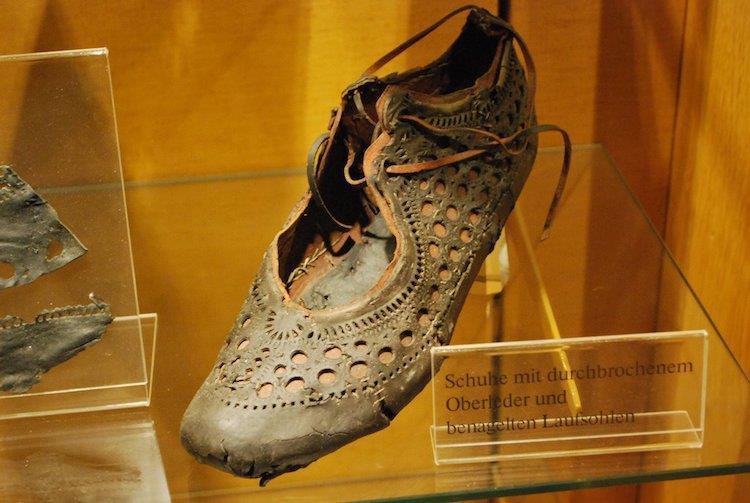
Figure 33: Protected Roman shoe (Stewart, 2018)

Figure 31: Illustrations of Roman footwear (Alamy, n.d.)
Footwear
Variations of different Roman shoes consist of the Calceus, Cothurnus, Crepida, Gallicae, and the Solea (Pendergast & Pendergast, 2004). The ‘Calceus’ was known as the basic outdoor shoe worn by the Romans. The ‘Crepida’ was worn for outdoors but had sides which covered the foot. The ‘Cothurnus’ was a style of boot worn by horsemen or hunters. The ‘Gallicae’ was another kind of boot that was worn for colder climates. The ‘Solea’ was a type of sandal worn for Romans who stayed indoors. These shoes were made from leather and some had papyrus leaves woven into the textile used. Nobles in a higher position wore different renditions of these kind of shoes to differ from their normality and social class (Pendergast & Pendergast, 2004).





